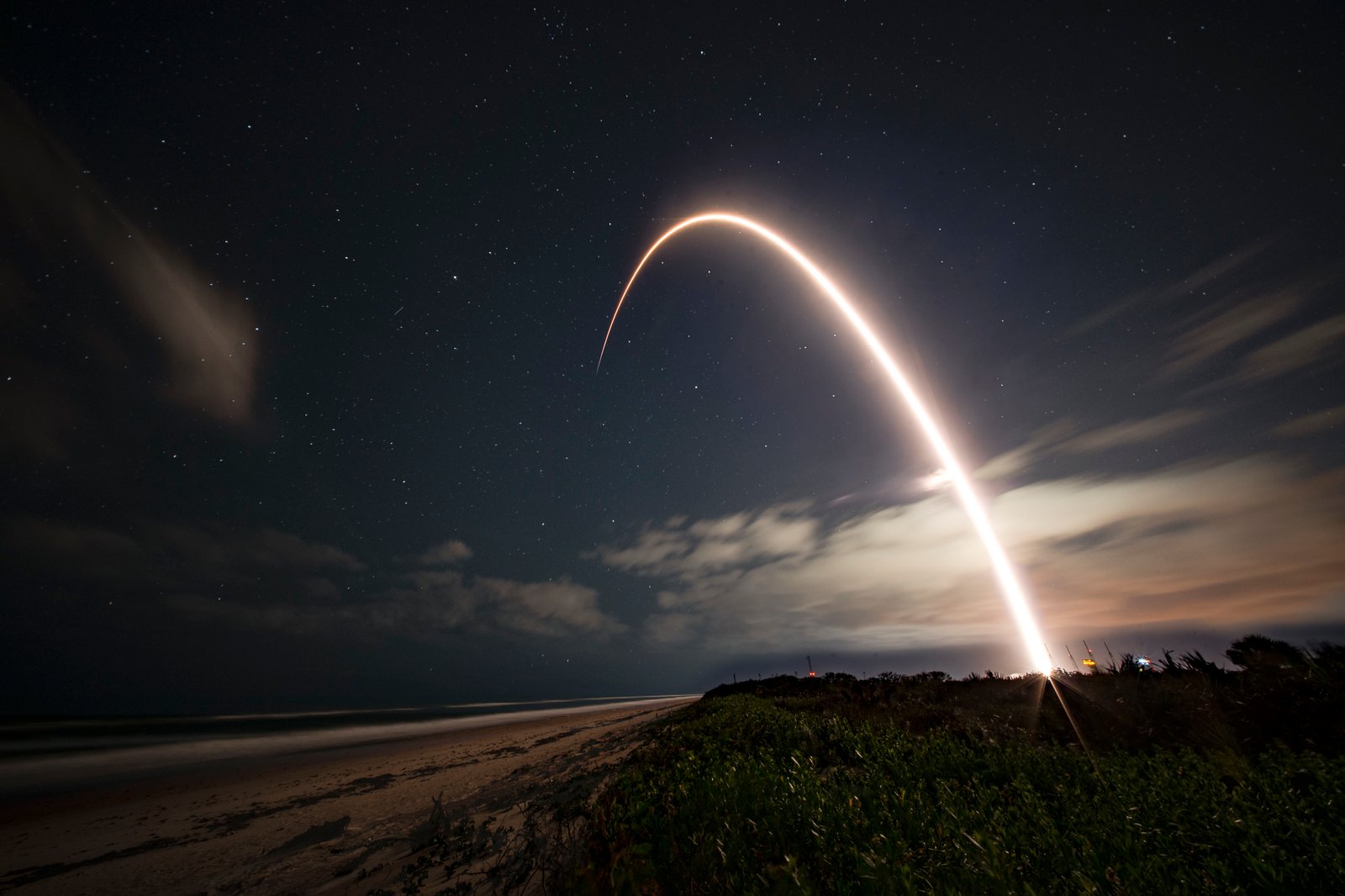On April 28, 2025, SpaceX launched its 250th dedicated Starlink flight, marking a major milestone in the company’s ambition to transform internet access worldwide. The company’s steadfast dedication to growing its constellation of satellite internet and providing high-speed connectivity to underserved areas across the globe.
The Mission Details
The milestone launch took place at 6:08 p.m. EDT (2208 GMT) from the Cape Canaveral Space Force Station in Florida’s Space Launch Complex 40. A Falcon 9 rocket carrying 23 Starlink V2 Mini satellites lifted off, continuing SpaceX’s efforts to enhance its low Earth orbit (LEO) broadband network.
65 minutes after liftoff, the Falcon 9’s upper stage deployed the 23 satellites into their designated orbits, adding to the growing Starlink constellation.
Reusability Milestone
The Falcon 9 rocket’s first-stage booster, designated B1076, successfully returned to Earth, landing vertically on the droneship “Just Read the Instructions” stationed in the Atlantic Ocean. This landing marked the 13th flight for this particular booster, showcasing SpaceX’s advancements in rocket reusability.
Expanding Global Connectivity
With this launch, SpaceX has now deployed over 6,700 operational Starlink satellites, solidifying its position as the largest satellite internet provider globally. In locations that previously lacked dependable connectivity, the Starlink network bridges the digital gap by bringing high-speed internet access to rural and isolated communities, opening doors for economic development, healthcare, and education.

Looking Ahead
As SpaceX continues to expand its Starlink constellation, the company aims to provide global broadband coverage, ensuring that even the most remote locations have access to reliable internet services. The success of the 250th dedicated launch is a testament to SpaceX’s engineering prowess and commitment to innovation in the aerospace industry.
For those interested in experiencing Starlink’s services, Starlink’s official website offers information on availability and service plans tailored to various needs.
Looking to the Future: Starlink and Starship
SpaceX’s Starship, which can launch dozens of full-size V2 satellites in a single launch, is the subject of the upcoming Starlink chapter. The switch to Starship will further lower launch costs, and these satellites will have substantially higher bandwidth.
This change has the potential to significantly increase the speed and resilience of the Starlink network, giving rural people throughout the world access to fiber-like speeds.
Real-World Impact
Here’s how Starlink is changing lives:
1. Education in Remote Areas
In rural schools in Kenya and Nepal, students now access online learning platforms, Zoom classes, and research tools that were previously unavailable.
2. Disaster Response
After natural disasters like earthquakes or floods, Starlink is often deployed to reconnect areas cut off from the grid—supporting rescue teams and medical aid operations.
3. Military and Defense
Starlink has been used in conflict zones like Ukraine, offering critical connectivity to military forces and civilians when terrestrial infrastructure was disrupted.
4. Businesses and Entrepreneurs
Small business owners in areas without fiber or 5G now use Starlink to power online stores, take payments, and connect with customers worldwide.
How to Get Starlink
To order Starlink, customers simply:
Go to starlink.com
Enter their service address
Choose a plan (residential, RV, maritime, aviation)
Order the kit (which includes a dish, router, and cables)
In most places, setup is plug-and-play and shipping is quick. Users of Starlink Roam are able to carry their food anyplace there is open air.
Final Thoughts: This Is Just the Beginning
The 250th Starlink mission is a milestone not only for SpaceX but for humanity’s ability to bring people closer together through technology. What once sounded like science fiction—a globe covered by a constellation of fast, low-latency satellites—is now a reality we use every day.
SpaceX has proven that a private company can drive infrastructure at a planetary scale, challenging traditional models and empowering people with the tools of the internet age, no matter where they live.
As Starlink continues to grow and evolve—especially with the upcoming Starship-powered deployments—the dream of universal, affordable, high-quality internet access is coming ever closer to reality.

